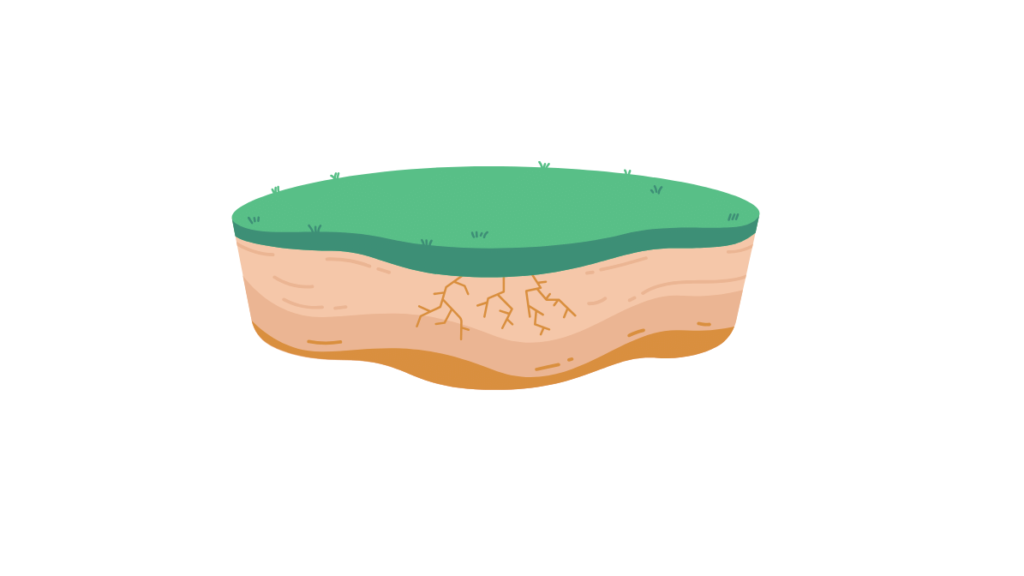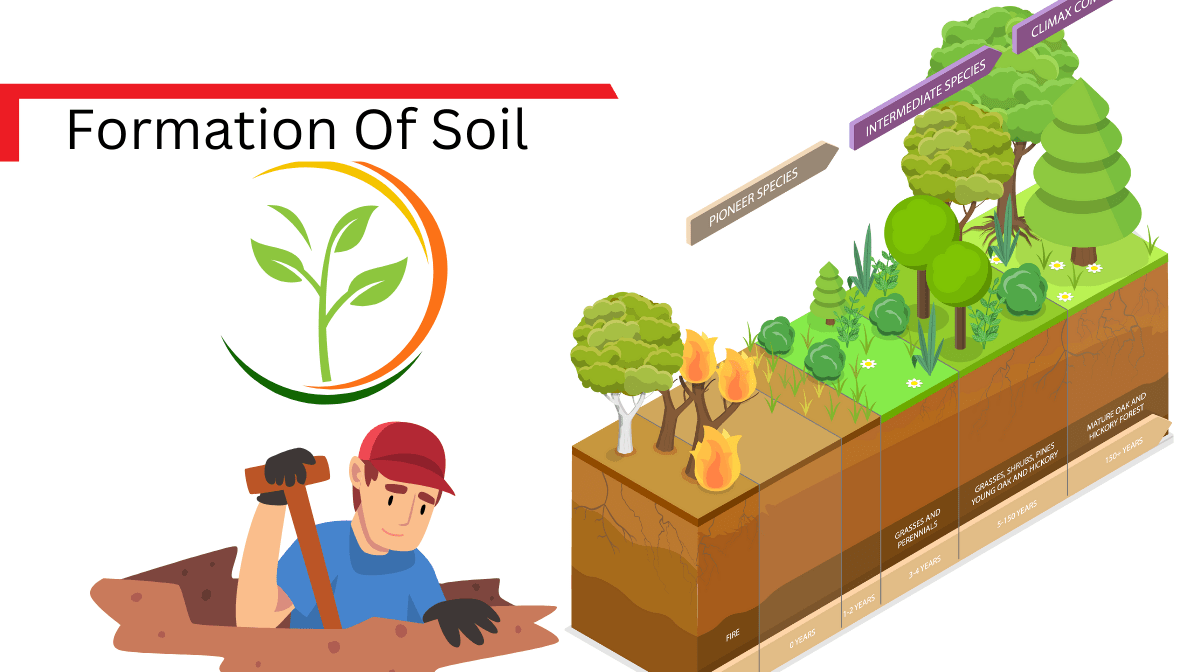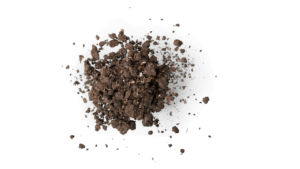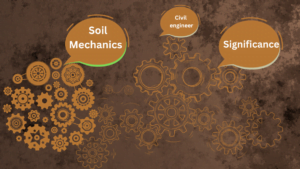Origin of Soil
Exposed rocks undergo erosion and erosion through physical and chemical processes. The eroded material is transported by agents such as water and wind, which alter and disrupt the Earth’s equilibrium, causing significant movements and upheavals in the Earth. This repetition exposes more rocks, continuing the geological cycle.(Basic introductio of Soil)
If the soil remains near its site of formation, just above the parent rock, it is called residual or sedimentary soil. The engineering properties of residual soil vary depending on its origin. If soil is transported to a new location, it is called transported soil.

Formation of Soil
Soil formation involves geological processes like weathering, transportation, deposition, and upheaval, driven by physical and chemical disintegration of rocks.

1. Weathering of Soil
Physical Disintegration
Temperature changes: Minerals in rocks have different coefficients of thermal expansion, causing stress and separation of particles due to temperature fluctuations.
Ice wedging: Water freezing in the pores and cracks of a rock expands, increasing stress that causes the rock to break.
Spread of plant roots: Plant roots penetrate into the cracks of the rock and exert force, causing the rock to gradually break into pieces.
Abrasion: Water, wind, and glaciers cause friction and abrasion on rock surfaces, resulting in soil formation.
In physical dissolution, the chemical composition remains unchanged, leading to the formation of coarse-grained soils such as gravel and sand.
Chemical Decomposition
Hydration: Minerals react with water, forming new chemical compounds, changing volume, and decomposing rocks into smaller particles.
Carbonation: Carbon dioxide in the atmosphere combines with water to create carbonic acid, which then reacts with rocks, causing decomposition.
Oxidation: Oxygen ions combine with minerals, akin to rusting, leading to rock decomposition.
Solution: Some minerals dissolve in water through chemical reactions, forming soil.
Hydrolysis: Water dissociates into H+ and OH- ions, replacing metallic ions in rock minerals, resulting in soil with altered chemical composition.
Chemical decomposition yields clay minerals, imparting plasticity to the soil. Clayey soils primarily form through chemical decomposition.

2. Transportation of Soil
Soil is transported by natural agents like running water (rivers), moving ice (glaciers), and blowing wind to new locations. The fragmented material weathered from rocks and transported to a different location is referred to as transported soil.
Classification Based on Transporting Agent
Water-Transported Soil
Alluvial Deposits: Layers of sand, silt, and clay carried swiftly by running water, forming alluvial soil. Examples include alluvial cones and deltas.
Lacustrine Deposits: Soil carried by rivers into lakes, with coarse particles settling at the lake’s edge and fine-grained particles settling in the center, forming layers with seasons. These are called lacustrine deposits.
Marine Deposits: Soil transported and deposited in the deep sea by sedimentation of soil particles. Marine deposits have low shear strength, high compressibility, and contain a significant amount of organic matter, especially marine clays.
Wind-Transported Soil
Fine-grain soil eroded and deposited by wind, forming aeolian deposits. Accumulations of such wind-deposited sand create dunes.
Loess: Silt deposited by wind, with low density, high compressibility, and poor bearing capacity when wet. It can experience volume reduction with increased moisture, known as collapse compression due to the collapse of soil structure.
3. Glacial Deposits
Soil formed from large masses of ice (glaciers) compacting snow. Glaciers, moving slowly, deform and scour surfaces. Melting glaciers deposit the material, termed as till or moraine. Glacial deposits typically contain angular particles.
Gravity Deposits
Material transported over short distances by gravity, termed colluvial soil or talus. These soils form in mountain valleys due to gravitational forces causing sediments to creep or slide down slopes.
Swamp and Marsh Deposits
In water-saturated areas with fluctuating water tables and vegetation, swamp and marsh deposits form. These soils are soft, high in organic content, and may contain muck or peat derived from aquatic plant decomposition. They are not suitable for construction due to their lightweight, high compressibility, and unpleasant Odor.
In India, there are several major types of soil deposits, each with its own characteristics, distribution, and significance. The primary soil deposits in India include

Alluvial Soil
Alluvial soil is one of the most widespread and agriculturally significant soil types in India. It is found in the Indo-Gangetic plains, river valleys, and deltas, including regions near the Ganges, Yamuna, Brahmaputra, and other major rivers. It is fertile and ideal for growing various crops.
Black Soil (Regur Soil)
Black soil, also known as “black cotton soil,” is found mainly in the Deccan Plateau, particularly in states like Maharashtra, Madhya Pradesh, and Gujarat. It is known for its dark color and high clay content. When properly irrigated, it can be very productive for cotton and other crops.
Red and Yellow Soil
Red and yellow soils are prevalent in the central and southern parts of India, covering states like Tamil Nadu, Karnataka, Andhra Pradesh, and parts of Maharashtra. They are characterized by their reddish to yellow color and are suitable for crops like millets, pulses, and groundnuts.
Laterite Soil
Laterite soil is found in the western ghats, parts of Karnataka, Kerala, and Odisha. It is formed by the leaching process and is typically rich in iron and aluminum oxides. Although not very fertile, it can be suitable for tea, coffee, and rubber plantations.
Arid and Desert Soil
Arid and desert soils are found in arid regions of Rajasthan, Gujarat, and Haryana. They are sandy and less fertile, suitable for drought-resistant crops and xerophytic vegetation.
Mountain and Forest Soil
Mountain and forest soils are found in the hilly and mountainous regions of India, including the Himalayas and the Western Ghats. They are generally acidic and suitable for the growth of forests.
Peat and Marshy Soils
Peat and marshy soils are found in the coastal regions, especially in the deltas of rivers like the Ganges and Brahmaputra. They are rich in organic matter and are suitable for rice cultivation.
Coman Types of Soil Terminology

Coman Types of Soil Terminology
| Soil Type | Description | Location in India | Suitability for Construction |
| Bentonite Soil | Absorbent clay forming a gel-like substance when mixed with water. | Predominantly found in Rajasthan and Gujarat. | Unsuitable due to high swelling and shrinkage properties. |
| Black Cotton Soil | Expansive clay with high clay content, causing significant volume changes with moisture variations. | Mainly found in the Deccan Plateau. | Challenging due to pronounced shrink-swell behavior. |
| Boulders | Large, rounded rock fragments typically larger than a cobble. | Scattered across various regions. | Not suitable in its natural state; often broken down for use. |
| Calcareous Soil | Soil rich in calcium carbonate or lime content. | Found in arid and semi-arid regions. | Not ideal due to high alkalinity and poor cohesion. |
| Clay | Fine-grained, cohesive soil with particles smaller than silt and sand. | Abundant, especially in Gangetic plains. | Versatile but requires proper treatment due to high plasticity. |
| Cobbles | Rock fragments larger than gravel but smaller than boulders. | Commonly found in riverbeds and mountainous areas. | Not suitable for construction; often used for landscaping. |
| Diatomaceous Earth | Soft, crumbly sedimentary rock or loose earth mainly composed of diatoms’ siliceous skeletal remains. | Found in some parts of Gujarat. | Not suitable for construction, used in filtration and industry. |
| Dispersive Clay | Clay with a tendency to disperse and erode easily when in contact with water. | Found in some regions. | Not suitable due to its erodible nature. |
| Dune Sands | Sand deposits in dune formations, often found in deserts and coastal areas. | Coastal and desert areas. | Suitable for construction purposes. |
| Expansive Clays | Clays that significantly expand when wet and shrink when dried. | Found in various regions. | Not suitable due to high shrink-swell properties. |
| Fills | Man-made deposits of soil or other materials used to raise the ground level. | Used across various regions for construction and levelling. | Suitable for filling and levelling but not as primary construction. |
| Gravel | Coarse-grained soil with rock fragments larger than 2 mm in diameter. | Commonly found across the country. | Suitable for construction, especially in concrete for stability. |
| Hardpans | Cemented or compacted layers in the soil restricting water movement and root penetration. | Found in various regions. | Not suitable due to its hard and compacted nature. |
| Humus | Organic matter in soil, dark and decomposed plant and animal matter. | Present in the upper layer of various soils. | Not suitable for construction, vital for vegetation. |
| Kankar | Gravelly or sandy soil cemented with calcium carbonate. | Found in arid and semi-arid regions. | Not suitable due to its hard and cemented nature. |
| Laterite Soil | Soil rich in iron and aluminum, often red in color, formed in hot and wet tropical areas. | Predominantly found in Kerala, Karnataka, and Orissa. | Suitable after proper curing; widely used in historical structures. |
| Loam | Soil with a balanced mixture of sand, silt, and clay. | Found in various regions. | Suitable for construction and agriculture. |
| Loess | Windblown silt, fine-grained and loosely compacted, often deposited in extensive layers. | Found in some regions. | Not ideal due to its loose and unconsolidated nature. |
| Marl | Calcareous clay or mud containing a mixture of minerals and calcium carbonate. | Found in some regions. | Not suitable due to its composition. |
| Morum | A mixture of gravel, clay, and sand often found on roadsides. | Commonly found across various regions. | Suitable for construction, often used in road building. |
| Muck | Organic-rich, dark-colored soil composed of decayed plant and animal matter. | Found in swampy areas. | Not suitable due to high organic content. |
| Peat | Organic-rich soil, primarily composed of decayed plant matter, often found in marshy areas. | Present in marshes and wetlands. | Not suitable due to high water content and organic matter. |
| Sand | Coarse-grained soil composed of mineral, rock, or organic particles ranging from 0.05 to 2 mm in diameter. | Abundant in coastal and arid regions. | Suitable for construction, widely used in concrete and foundations. |
| Silt | Fine-grained soil with particles smaller than sand but larger than clay. | Found in various regions. | Suitable for construction, often used in mortar and concrete. |
| Till | Unsorted glacial sediment containing a mixture of clay, sand, and gravel. | Found in glaciated regions. | Not ideal due to its unsorted composition. |
| Top Soil | The uppermost layer of soil, rich in organic matter and conducive to plant growth. | Found in various regions. | Not suitable for construction, essential for vegetation. |
| Tuff | Porous rock composed of volcanic ash, tuff, and other materials. | Found in some volcanic regions. | Not ideal due to its porous nature. |
| Tundra | Cold, treeless, flat or rolling biome in the Arctic and subarctic, consisting of frozen soil. | Found in the Arctic regions. | Not suitable for construction due to its frozen and unstable state. |
| Varved Clays | Fine-grained clays deposited in glacial lakes, often exhibiting distinct layers. | Found in some glaciated regions. | Not suitable for construction due to its fine and layered nature. |





Pingback: Soil Mechanics Introduction - Chapter 1